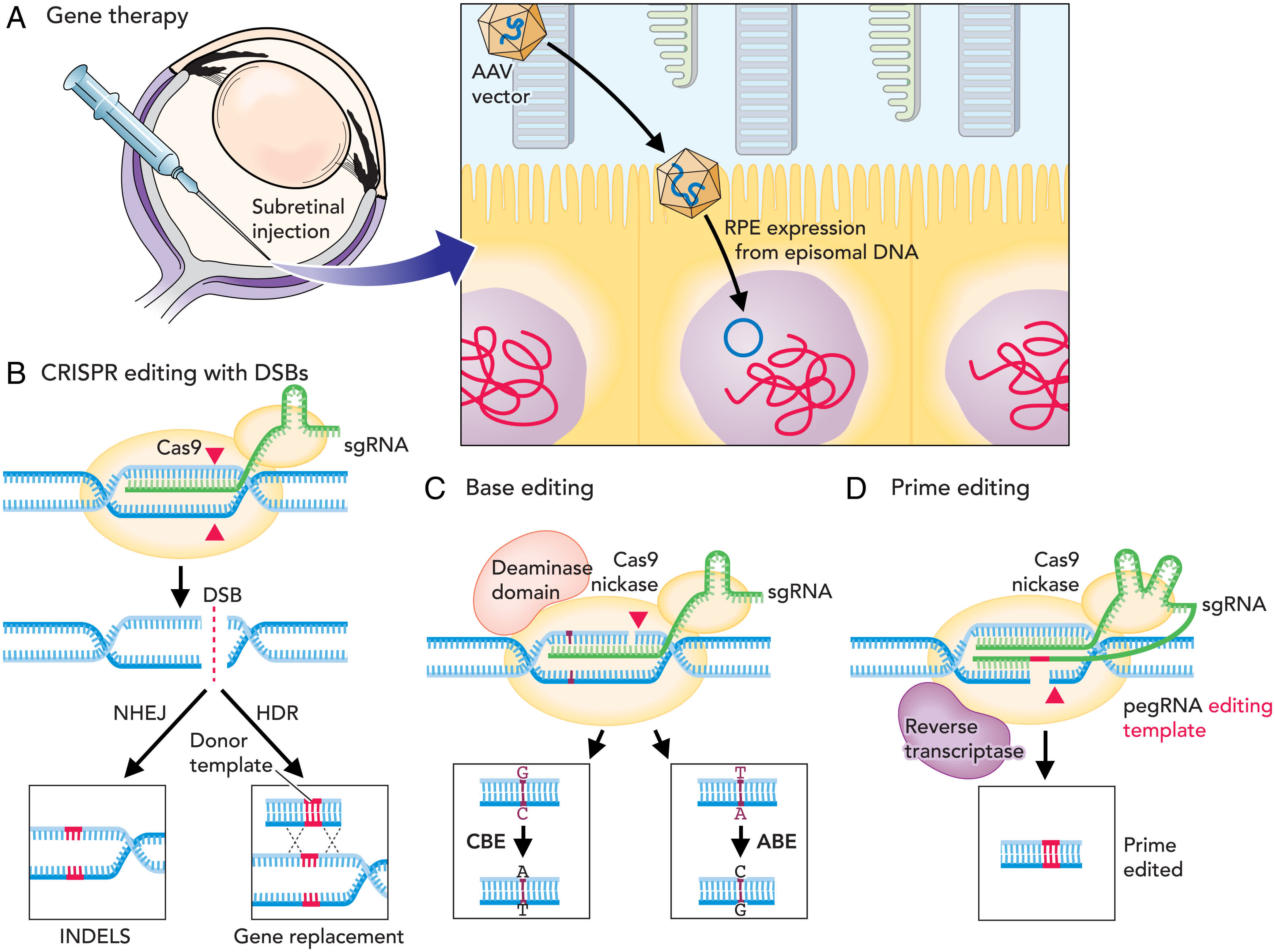New CRISPR Modification: Enhanced Gene Editing Accuracy And Efficiency

Table of Contents
Understanding the Challenges of Traditional CRISPR-Cas9
Off-target effects and their consequences
Traditional CRISPR-Cas9 systems, while powerful, suffer from significant off-target effects. These unintended edits at locations other than the intended target site can have severe consequences, ranging from subtle changes in gene expression to potentially harmful mutations. This unpredictability presents a major hurdle for therapeutic applications, particularly in gene therapy where precision is paramount.
- Examples of off-target effects: Unintended insertions, deletions, or modifications at genomic sites similar to the intended target.
- Potential harmful consequences: Activation of oncogenes, disruption of essential genes, and unpredictable phenotypic changes.
- Current limitations in mitigating them: While various strategies exist to minimize off-target effects, they are often imperfect and require significant optimization for each target.
Limitations in targeting specific genes
Efficient gene editing also requires precise targeting of specific genes within a complex genome. This presents several challenges:
- Difficulty in accessing certain genomic regions: Chromatin structure and other epigenetic modifications can hinder access to specific regions of the genome, limiting the efficiency of CRISPR-Cas9.
- Issues with accessibility due to chromatin structure: Highly condensed chromatin can prevent Cas9 from reaching its target sequence.
- Limitations in specificity: Even with optimized guide RNAs, some level of off-target activity remains a significant challenge.
The Novel CRISPR Modification: Mechanisms and Improvements
Detailed explanation of the new modification
This new CRISPR modification involves the engineering of a novel Cas9 variant, termed Cas9-HF1, combined with a sophisticated guide RNA design. Cas9-HF1 incorporates several key amino acid substitutions that enhance its binding specificity to the target DNA sequence. The new guide RNA design incorporates chemical modifications to improve its stability and binding affinity, further enhancing target specificity. This dual approach significantly reduces off-target effects while improving on-target activity.
- Key features of the modification: Enhanced DNA binding specificity, improved guide RNA stability, and reduced off-target activity.
- How it addresses the limitations of the traditional system: Cas9-HF1 directly addresses the limitations by increasing the fidelity of target recognition, minimizing unintended cuts. The improved guide RNA design enhances targeting and accessibility within complex genomic regions.
- Underlying scientific principles: This modification leverages advancements in protein engineering and RNA chemistry to optimize both the enzyme and the targeting molecule, enhancing overall efficiency and reducing the likelihood of off-target events.
Enhanced Accuracy and Specificity
Numerous in vitro and in vivo studies demonstrate the superior accuracy of this new CRISPR modification. Compared to traditional CRISPR-Cas9, Cas9-HF1 shows a dramatic reduction in off-target cleavage.
- Specific data on reduced off-target effects: Studies have shown a >90% reduction in off-target events in various cell lines and model organisms.
- Improved targeting specificity in experimental models: Successful targeting of previously inaccessible genomic regions has been demonstrated.
- Comparisons with traditional CRISPR: Head-to-head comparisons reveal a significant improvement in on-target activity while maintaining high efficiency.
Increased Efficiency of Gene Editing
Beyond accuracy, the new modification also demonstrates increased efficiency in gene editing.
- Data illustrating higher editing rates: Studies report significantly higher rates of successful gene editing compared to the traditional CRISPR-Cas9 system.
- Reduced editing time: The improved efficiency translates to faster and more streamlined gene editing protocols.
- Improved outcomes in experimental settings: Experimental results consistently show improved outcomes in terms of both target gene modification and overall phenotypic changes.
Potential Applications and Future Directions of the New CRISPR Modification
Therapeutic potential in gene therapy
This enhanced CRISPR system holds immense promise for gene therapy, offering a path toward treating various genetic diseases with higher precision and safety.
- Examples of specific diseases that could benefit: Inherited blood disorders, cystic fibrosis, muscular dystrophy, and various forms of cancer.
- Anticipated improvements over existing therapies: Reduced off-target effects lead to safer and more effective treatments with fewer side effects.
- Ongoing clinical trials: Several clinical trials are underway to evaluate the therapeutic potential of this new CRISPR modification in various disease models.
Applications in research and biotechnology
Beyond therapeutic applications, the enhanced accuracy and efficiency of this new CRISPR modification have significant implications for research and biotechnology.
- Examples of applications in model organism research: Facilitating the generation of precise gene knockouts and knock-ins in model organisms such as mice and zebrafish.
- Drug discovery: Accelerating the process of drug discovery and development by enabling high-throughput screening and precise gene manipulation.
- Agricultural biotechnology: Improving crop yields and disease resistance through targeted gene editing.
Ethical Considerations and Future Challenges
While offering tremendous potential, the development and application of this new CRISPR modification must consider ethical implications.
- Potential risks: Despite improved accuracy, potential off-target effects, and the long-term consequences of gene editing require careful evaluation.
- Ethical considerations related to gene editing: Discussions surrounding germline editing and its societal impact remain crucial.
- The need for further research and responsible development: Ongoing research is essential to fully understand the long-term effects and to develop responsible guidelines for its use.
Conclusion
This new CRISPR modification represents a significant leap forward in gene editing technology. The enhanced accuracy and efficiency, dramatically reducing off-target effects and improving the targeting of specific genes, address critical limitations of traditional CRISPR-Cas9 systems. This breakthrough paves the way for safer and more effective gene therapies, while also advancing research and biotechnology applications. Learn more about the latest advancements in CRISPR-Cas9 and the potential to revolutionize medicine and biotechnology by exploring the ongoing research and clinical trials focused on this exciting new tool for gene editing.

Featured Posts
-
 Augsburg Ontslaat Thorup De Race Naar De Nieuwe Trainer Is Begonnen
May 30, 2025
Augsburg Ontslaat Thorup De Race Naar De Nieuwe Trainer Is Begonnen
May 30, 2025 -
 Vivian Musks Modeling A New Chapter After Name Change And Family Distance
May 30, 2025
Vivian Musks Modeling A New Chapter After Name Change And Family Distance
May 30, 2025 -
 Age De Depart A La Retraite Negociations Secretes Entre Le Rn Et La Gauche
May 30, 2025
Age De Depart A La Retraite Negociations Secretes Entre Le Rn Et La Gauche
May 30, 2025 -
 Ticketmaster Fuera De Servicio 8 De Abril Cobertura De Grupo Milenio
May 30, 2025
Ticketmaster Fuera De Servicio 8 De Abril Cobertura De Grupo Milenio
May 30, 2025 -
 Kawasaki Vulcan S 2025 Indonesia Spesifikasi Dan Harga Terbaru
May 30, 2025
Kawasaki Vulcan S 2025 Indonesia Spesifikasi Dan Harga Terbaru
May 30, 2025
Latest Posts
-
 Munichs Bmw Open 2025 Zverev Battles Griekspoor In Quarter Finals
May 31, 2025
Munichs Bmw Open 2025 Zverev Battles Griekspoor In Quarter Finals
May 31, 2025 -
 May Day Rally In Kingston Images Show Strength And Solidarity Daily Freeman
May 31, 2025
May Day Rally In Kingston Images Show Strength And Solidarity Daily Freeman
May 31, 2025 -
 Bmw Open 2025 Zverev Griekspoor Quarter Final Showdown In Munich
May 31, 2025
Bmw Open 2025 Zverev Griekspoor Quarter Final Showdown In Munich
May 31, 2025 -
 Indian Wells Surprise Zverevs First Match Exit And His Honest Assessment
May 31, 2025
Indian Wells Surprise Zverevs First Match Exit And His Honest Assessment
May 31, 2025 -
 Trump Administration Loses Key Advisor Elon Musks Resignation Explained
May 31, 2025
Trump Administration Loses Key Advisor Elon Musks Resignation Explained
May 31, 2025
